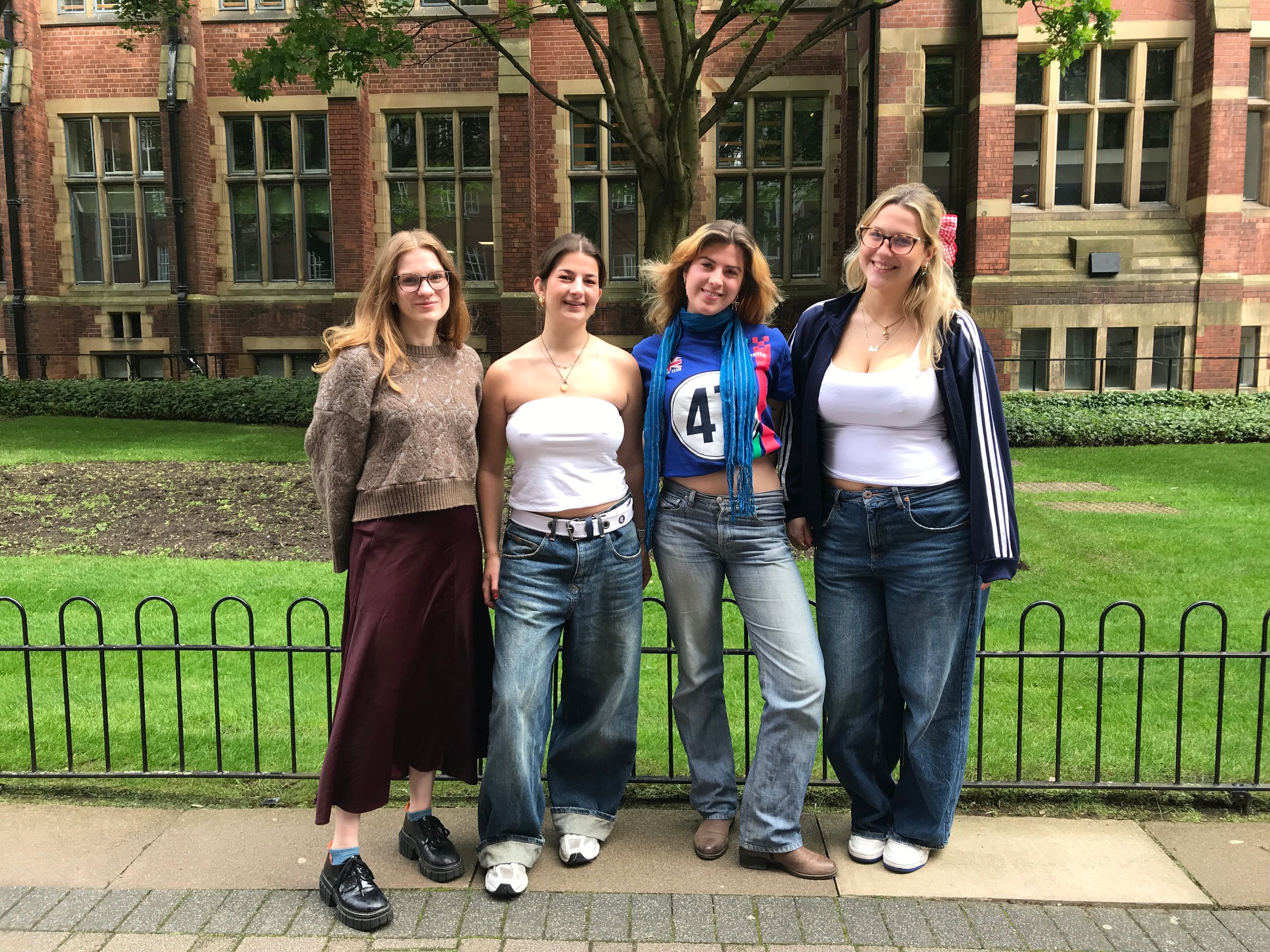Hannah Hogg – BA Liberal Arts, University of Leeds – May 2024

Why Bristol?
Bristol is a vibrant youthful city, home to two Universities, and also a UNESCO City of Film. But what makes it carry this UNESCO label? It is a pioneering city developing tools and skills in the film industry, the host of 11 film festivals as well as its wide engagement with the public such as the British Film Institute audience network Hub.
In this blog, I will explore Bristol’s connection with the Sustainable Development Goal (SDG) 11, which has the main aim of “making cities inclusive, safe, resilient and sustainable”.
Bristol is incredibly diverse, home to approximately 287 different ethnic groups. This diversity brings with it a rich tapestry of culture and history, including connections to the slave trade. One of the main urban challenges is uniting these diverse communities and bridging gaps, which in a large city such as Bristol is particularly difficult.
My research draws upon two indirect aspects of community cohesion. Firstly, how the City of Film label has encouraged cohesion and, secondly, focusing on the impact of studentification in this context. According to Smith (2016), studentification is the process whereby high numbers of university students move into established residential neighbourhoods. This is a nationwide issue that is also recognised by academics Munroe and Livingston, and one of which I am personally connected to living in a student dominated city, Leeds.
As part of my research, I have interviewed a key stakeholder, Natalie Moore from Bristol City Council, and an anonymous student from the University of Bristol. With this investigation, my two aims are to understand if/what cultural policies are implemented to integrate diverse communities and to understand how/if the UNESCO City of Film designation is connected within this.
The research I have made has highlighted the underlying importance of culture in community-led programmes and that the key to successful community cohesion is support from national and local organisations. Let’s now dive into some of my research findings.
In conversation with Natalie Moore (Bristol UNESCO City of Film Manager, Bristol City Council)
From the beginning of the eye-opening conversation I had with Natalie Moore, it was clear that she strongly supported the value of culture, calling it the “golden thread” which I think perfectly describes it within the SDGs.
When asking her what she thought Bristol’s City of Film status has done to foster community cohesion, she argued it allowed the film industry to “shift the lens” from not just the economic value but also the social value of film. The status has allowed them to make it a programme and medium for all, making it accessible to all groups. She mentioned how the Bristol Summer film takeover (2023) – which was free – not only served its purpose by encouraging people back into the city after COVID-19, but also, being community-led, gave a variety of people a voice.
The programme has multiple events which strives to show new lenses on Bristol, opening up new conversations and encouraging them to share experiences. This is important when bridging communities as it engages people and attempts to challenge perceptions people may have.
With this challenge comes the need for creativity. For example, they have focused on the Windrush history instilled in Bristol and its current diverse groups. As well as this, Natalie mentioned the future plans and focus on Nollywood which is a popular Nigerian film industry based in Lagos such as Nollywood Nights: The CEO. These programmes create an inclusive society benefiting the economy and educational experience for minority groups.
The main challenges are surrounded by “making the case for culture”. One of the key takeaways I had from this interview is the importance of a network such as the UNESCO Creative Cities one. Being part of this network, coupled with advocacy from the UK National Commission for UNESCO, has given Bristol a platform to attract funding and partnerships.
However, the City of Film status is permanent yet under-funded therefore there is a challenge to support programmes long-term despite internal motivation. As well as the issue of balancing funding across the City Council, making the case for culture is one thing but ensuring other projects are not left unmanaged is another. Integration of groups goes further than focusing on minorities, so let’s continue delving into the tensions between students and existing residents.
Is there a place for students?
Diving into a separate, but significant, issue which comes with studentification. Often it is positioned to massively benefit a city’s economy but its social impacts on an area can be long lasting and drive these communities apart. Students are associated with noise and anti-social behaviour which disrupts neighbourhoods. Most policies formed by universities has the aim of silencing students, such as Bristol’s “Operation Beech” which gives the university power to fine students up to £5,000 per household for noise or antisocial behaviour.
As a student, I strongly believe this is not the best approach to community cohesion and that investigating the role of culture within policies is the better way forward. Speaking with an anonymous student there was significant levels of anger towards these policies often feeling like they were being “pushed further out of the community”. Appreciatively this is a difficult issue within community inclusion and cohesion. Taylor and many other journalists highlight multiple community projects aimed at students to get involved with.
Overall, in Bristol, there is a lack of programmes connected to SDGs that aim to integrate and unite the two groups. The City Council’s approach, including the City of Film programme, is based around interacting with diverse groups to ignite new conversations.
While initially these discussions can be hostile and difficult, they have allowed for existing issues to be resolved. One example of these programmes is the Cycle cinema which took place in 2023. Activities and events like this could have a long-lasting impact in areas such as Clifton (a popular student area) by bringing the opposing groups together to create better relationships and foster better cohesion. As a student myself, I am actively looking to get involved in the community like the one I have in my hometown and think there should be a larger emphasis on the benefits for students and residents in community activities
Moving forward with fostering cohesion
Bristol’s City of Film label has allowed projects to take less of an economical focus and draw more on community-led plans such as the Summer film takeover. Evidently this has allowed stakeholders to embrace their culture of film and use it to unite people across social groups as a result benefitting the community.
The City Council also aids those marginalised social groups using this focus as film is so diverse and can appeal to anyone. Despite its prominence and success there is still this expectation that culture still needs to convince fund allocators in order to move forward and make a larger impact. Due to its “golden thread” theme throughout all SDGs as mentioned in our previous blog it still lacks the well-deserved support it needs.
There is a small indication that the relationship between students and residents is tense. Arguably the policies in place do not foster the same approach as the Bristol’s summer film takeover such as sharing stories of the Windrush generation with the aim of “bringing people together” and starting new conversations.
Overall Bristol has benefitted from its UNESCO Creative City designation and projects that it continues to generate. From interviewing Natalie, it was clear that the focus of the designation’s projects were for existing residents.
However, I think it would be beneficial to create roles for students especially those who did not grow up in Bristol. When looking at both Universities volunteer pages (University of the West of England and University of Bristol) there are no opportunities through the programme for students to get involved with. This would be a great opportunity to potentially support the lack of funding but draw all groups in Bristol together especially with the international element of students in Bristol.
Alongside this, more and continuous funding allocation would contribute to widen the opportunities. This coupled with strategic decision-making will create an expansive impact. I hope this research raises awareness surrounding the allocations of UNESCO labels and puts a spotlight on the powerful work it is doing to connect people from different cultures.
I thoroughly look forward to seeing what they achieve in the future and wish the city of Bristol the best of luck and keep up with the good work!
Acknowledgements
I would like to thank Natalie Moore for contributing to my research and giving me a greater understanding of the amazing work she and her team are doing. Many thanks also to the student I interviewed who gave me an insight into student life at Bristol. Lastly, I extend my acknowledgments to Dr Francesca Gilberto who has been an incredible supervisor throughout this project with her continuous encouragement and support.
Exploring Sustainable Development in UK UNESCO Designated Sites

This series of blogs, a continuation from the initial publication by the Horizons Institute at the University of Leeds, has been authored by four second-year BA Liberal Arts students as part of the project ‘Exploring Sustainable Development in UK UNESCO Designated Sites’, for the module ‘FOAH2001: Research Placement’ at the University of Leeds. The project was supervised by Dr Francesca Giliberto, a research fellow specialising in management, cultural heritage, and sustainable (urban) development at the Leeds University Business School, and is developed in partnership with the UK National Commission (UKNC) for UNESCO.
Over the past eight months, these students have explored culturally based sustainable development frameworks within specific UNESCO designated sites across the UK. Their investigation has focused on understanding how these sites navigate interconnected challenges and function as a bridge for local-to-global initiatives. Throughout their research journey, the students have actively engaged with site managers, practitioners, project evaluators, the UKNC for UNESCO, and various stakeholders. Their aim has been to discern the intricate interplay between diverse sectors and objectives, with a particular focus on the practical localisation of the United Nations’ Sustainable Development Goals (SDGs) through the lens of cultural preservation and promotion.

